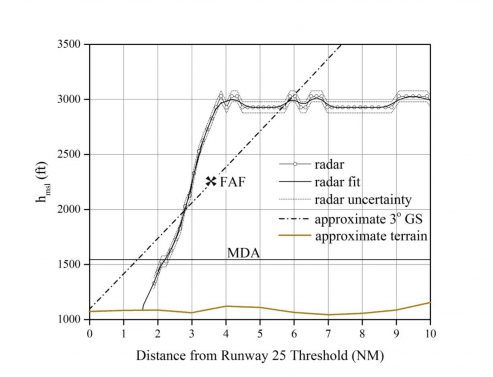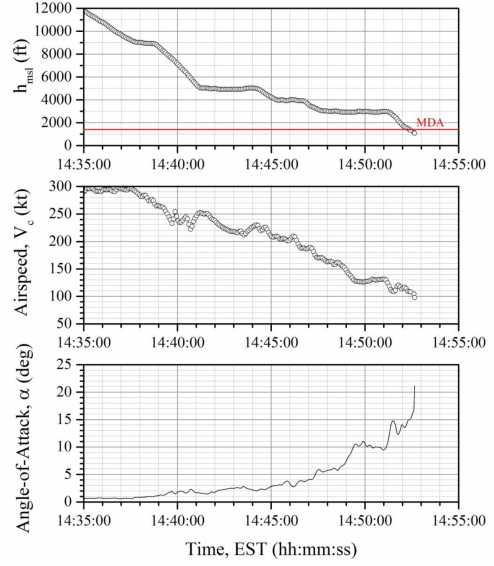Loss of Control Leads to CFIT – Part 2
- May
- 17
- 2017
- Advanced Aircrew Academy
Remember our initial discussion on the Hawker 700 crash in Akron, OH? If not, review that blog post.
Many people wonder "why didn't the Captain take over"? In this situation, I actually agree with the PIC's decision to let the SIC fly the leg. I've come to the conclusion that sometimes it's better as the Captain to be the Pilot Monitoring as I can keep my Situational Awareness going and manage the flight instead of doing the actual flying.
Where it all went wrong is the Captain's decision to not go-around from a descent and approach that had so many deficiencies that I don't even know where to start. If you're not stabilized, get out of there! See my previous blog post "The economics of a go around" about the costs associated with a go-around.
The descent profile from the NTSB report shows that the crew was pretty high over the FAF and started the descent late. The crew then descended at 2000 FPM in an attempt to salvage the approach. Also, if you look at the AOA profile in the following image, you can see the aircraft had a 10 degree AOA (and increasing) with decreasing airspeed from the FAF all the way to impact.


We've all been there. Sometimes your day just isn't going right, your timing is off, you got a raisin bagel instead of a plain bagel, your flux capacitor needs to be recharged...whatever it is, you have to trust that little voice in your head that says "this isn't right." I'm high, I'm slow, I'm past my descent point, my descent rate is wayyyyy too high. At what point do you acknowledge a bad situation, push the power levers up, and try again?
The crew of this Hawker went past all my internal red flags when they almost stalled at the FAF, descended too steep in an attempt to salvage the non-precision approach, and eventually stalled in a loss of control situation at MDA while trying to find the runway in marginal weather. When it's not your day, get out of there and try again. Go arounds never make the news, but accidents do.
This accident has been added as a case study in both Advanced Aircrew Academy’s Loss of Control‑Inflight and Controlled Flight Into Terrain eLearning modules.

